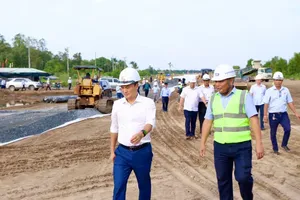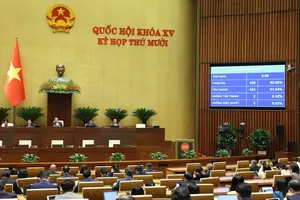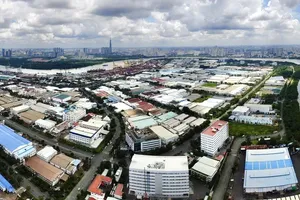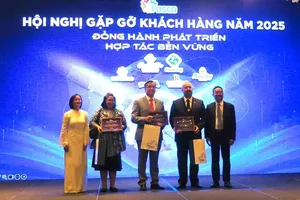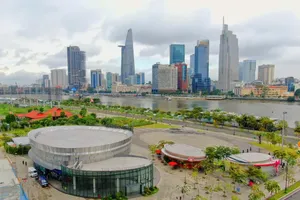At the heart of this transformation is not merely a streamlining of bureaucracy but a comprehensive restructuring of the civil service workforce at the grassroots level, the officials directly responsible for implementing public policies, delivering public services, and engaging daily with citizens and businesses.
Personnel assessment and selection
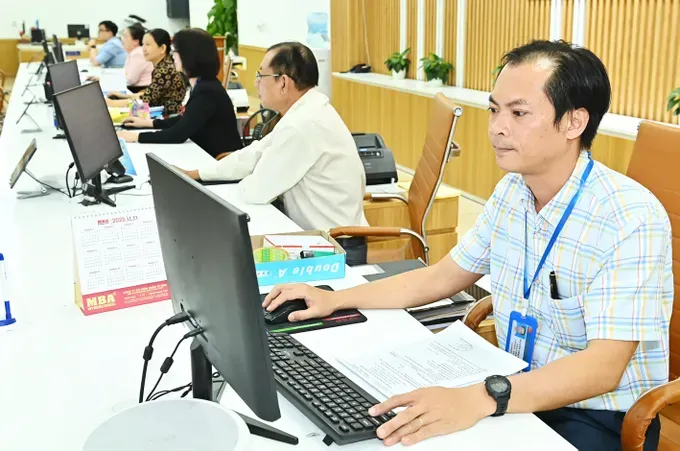
Under a plan to merge the provinces of Binh Duong and Ba Ria–Vung Tau with Ho Chi Minh City into a unified administrative entity, the newly formed metropolis would consist of just 168 commune-level administrative units, including 113 wards, 54 communes, and one special economic zone, representing a nearly 62 percent reduction compared to the original number of units, marking the most extensive administrative reform ever undertaken in the Southern Key Economic Region. Alongside the structural consolidation, a review and reorganization of existing personnel has emerged as a critical task.
In preparation for the post-merger administrative landscape, Chairman of the Ho Chi Minh City People’s Committee Nguyen Van Duoc has issued many directives instructing State agencies, units, and localities, along with organizations’ leaders, to conduct a thorough evaluation of their civil servant workforce to reassign officials to positions aligned with their qualifications, competencies, and the operational demands.
According to Mr. Nguyen Van Loi, Secretary of the Party Committee of Binh Duong Province, human resource management is the decisive factor in the success of the administrative restructuring and streamlining process. The selection of officials, he emphasized, must be conducted with objectivity, integrity, and strict adherence to the principle of placing collective interests above all, choosing people for the job. The city is also moving to phase out officials who no longer meet performance expectations, whether due to declining health, inadequate professional capacity, or diminished public trust.
Following the organizational realignment, heads of agencies, organizations, and institutions are tasked with developing training plans for their staff to ensure they meet the job requirements of their newly designated positions.
Localities must prioritize organizing training courses and professional development for groups of cadres, civil servants, and public employees who are transferred to new positions or receive additional functions and tasks, helping them improve their knowledge and skills in public service activities, meet the requirements of the job position, and ensure that state management activities are not affected after the organizational restructuring.
In addition to training initiatives, local authorities are also assessing, identifying, and selecting cadres with good professional qualifications and strong political qualities to arrange for key grassroots leadership positions. Special attention is being given to strategically important or complex localities, as well as areas designated as drivers of economic growth. The focus is on selecting qualified civil servants, particularly those with technical proficiency in fields such as science and technology, innovation, land management, construction, investment projects, transportation, and public administration. This is a thorough preparation to ensure that after streamlining, the grassroots administrative apparatus still has the capacity to perform its tasks.
At a recent conference to review the implementation, coordination, and progress of the merger of provincial and communal administrative units jointly held by the Standing Committees of the Party Committees of Ho Chi Minh City, Binh Duong, and Ba Ria-Vung Tau provinces, Secretary of the Ho Chi Minh City Party Committee Nguyen Van Nen affirmed that to ensure the effective implementation of the restructuring of administrative units, the localities must prioritize the selection and appointment of qualified personnel capable of meeting the demands of the new context and responsibilities, ensuring the apparatus of the political system operates evenly, smoothly, and transparently according to a new organizational model that is closer to the people, more responsive to their needs, and better serves the public.
Modernizing public service
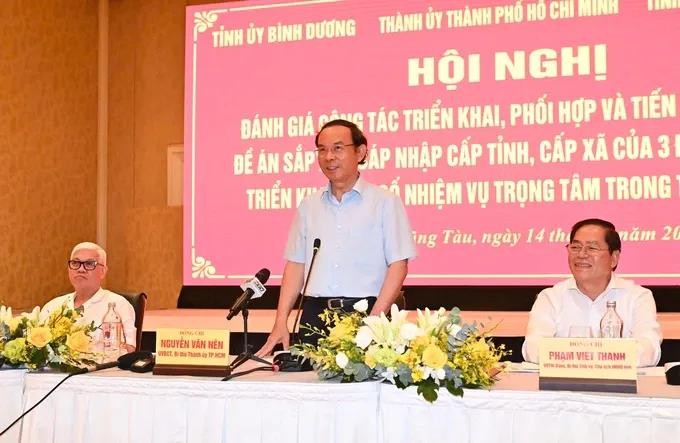
According to many experts, as the megacity is established, grassroots-level civil servants can be flexibly reassigned and reinforced with each other to meet the evolving demands of regional development. A public officer in Ho Chi Minh City could efficiently handle procedures for businesses in industrial zones in Binh Duong and the port complex in Ba Ria–Vung Tau if equipped with skills and synchronized data systems. Therefore, building a unified human resource database connecting localities in the region is an essential task.
According to Ms. Vy Thi Thu Sinh, M.A., from the Academy of Politics Region II, building a centralized and interconnected data system across administrative units while ensuring information security is the foundation for the development of effective e-government.
From a different perspective, Associate Professor Dr. Ngo Thanh Can of the Academy of Public Administration and Governance stated that there can be no modern government without competent grassroots-level civil servants. Streamlining the State apparatus must be associated with standardizing qualifications, clarifying functions and tasks, and selecting truly suitable people.
Associate Professor Dr. Ngo Thanh Can also highlighted that in the digital urban environment, evaluating civil servants should prioritize actual performance outcomes rather than relying solely on academic qualifications or seniority. Models such as digital task assignment, weekly progress reporting, and data-driven output analysis should be widely implemented at the communes and wards.
The Ho Chi Minh City Department of Home Affairs has proactively implemented the “Smart Office” project, a digital platform application model that enables civil servants to work flexibly, reducing reliance on fixed office spaces.
According to Mr. Nguyen Sy Long, Deputy Head of the Civil Servants and Public Employees Division under the Department of Home Affairs of the city, piloting this model has significantly improved labor productivity, streamlined administrative procedures, and enhanced the efficiency of receiving and processing citizens’ documents. The city is now expanding this initiative in wards and communes.
According to Dr. Nguyen Thanh Hoa, Deputy Director of the Ho Chi Minh City’s Center for Digital Transformation, the city needs to organize its administrative apparatus based on a “function-driven” governance model rather than one based strictly on geographic boundaries, especially in cross-district fields such as transportation, environment, and urban planning. Therefore, the city must develop a shared data infrastructure, including a GIS (geographic information system) digital map and a Smart City Intelligent Operation Center (IOC), and train a workforce capable of handling big data and integrating artificial intelligence (AI) into public decision-making processes.
In addition, a model of modern government organization cannot overlook the critical role of citizens as co-managers of governance. Enhancing the use of digital technology in receiving on-site feedback and online interaction between people and the government via platforms like the 1022 portal and the city’s digital applications should be integrated into formal administrative processes, aiming to build an ecosystem of “government, citizens, and businesses” that collaborate with each other.
Dr. Nguyen Minh Huyen Trang of the Vietnam National University, Ho Chi Minh City (VNU-HCM), said that the reorganization of personnel at the ward and commune levels presents an opportunity to redefine public service culture. As government administration transitions to a digital platform, individual capabilities must be paired with collaborative skills, transparent behavior, and clear productivity. Evaluating officials based on KPIs, output effectiveness, and an innovative spirit should become the norm, replacing traditional reliance on academic credentials or seniority.
With strong political will, a modern vision, and social consensus, Ho Chi Minh City is progressively realizing a new urban governance model that is transparent, efficient, flexible, and humane. This foundation will enable the city to maintain its position as a key growth engine, leading the Southern Key Economic Region and the country.


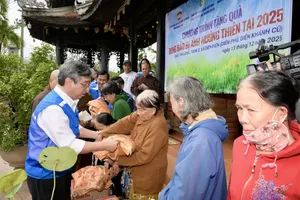
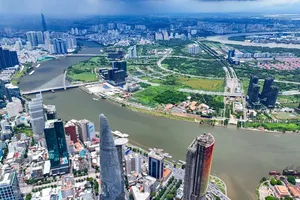
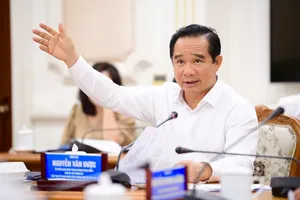


)



